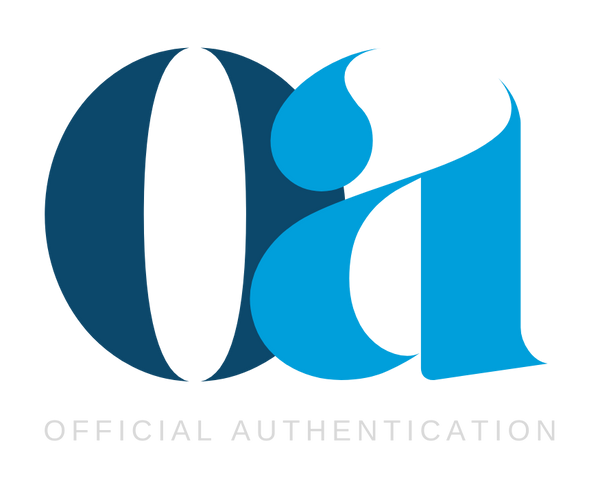The luxury authentication industry faces an unprecedented challenge as counterfeit goods have evolved from obvious knockoffs to sophisticated replicas that blur the line between authentic and fake. This transformation is reshaping the landscape of luxury commerce and brand protection in ways previously unimaginable.
The Rise of Superfakes: A New Era of Counterfeiting
The term "superfakes" has emerged to describe a new generation of counterfeit luxury goods that exhibit extraordinary attention to detail and quality. Unlike traditional counterfeits that were easily identifiable through poor craftsmanship, incorrect logos, or substandard materials, superfakes represent a quantum leap in counterfeiting technology and technique.
Advanced Manufacturing Techniques

Modern counterfeiters have gained access to sophisticated manufacturing equipment and techniques previously exclusive to legitimate luxury brands. High-end machinery capable of precise stitching, accurate embossing, and quality leather processing has become more accessible, enabling counterfeiters to replicate the tactile and visual elements that once served as clear authenticity markers.
The production of superfakes often involves reverse engineering authentic products down to microscopic details. Counterfeiters analyze genuine items using advanced imaging technology, studying everything from thread patterns to hardware specifications. This meticulous approach results in replicas that can fool even experienced collectors and resellers.
Manufacturing facilities producing superfakes now operate with quality control standards that rival legitimate luxury goods production. These operations employ skilled craftspeople who understand the nuances of luxury construction techniques, creating products that maintain consistency across batches and demonstrate remarkable attention to detail.
Material Quality Enhancement

Contemporary counterfeiters have significantly upgraded their material sourcing. Where previous generations of fakes relied on obviously inferior leather, fabric, or hardware, superfakes often utilize materials that closely match the quality standards of authentic luxury goods. Some counterfeiters even source materials from the same suppliers used by legitimate luxury brands, making material-based authentication increasingly challenging.
The leather used in high-end replica handbags now frequently matches the grain patterns, texture, and aging characteristics of authentic luxury leather. Hardware components are manufactured to precise specifications, including accurate weight distribution and finishing techniques that were once exclusive to genuine products.
Serial Number and Authentication Feature Replication
Perhaps most concerning for authentication professionals is the sophisticated replication of security features. Modern superfakes frequently include accurate serial numbers, date codes, and authentication features that previously served as reliable verification methods. Counterfeiters have developed systems to generate plausible serial number sequences and have learned to replicate holographic elements, special stitching patterns, and proprietary hardware designs.
These counterfeiters maintain databases of authentic serial number patterns and production date correlations, enabling them to create items with internally consistent authentication markers. Some operations even replicate the specific packaging, dust bags, and authentication cards that accompany genuine luxury items.
Forensic-Level Authentication: The New Standard

The proliferation of superfakes has necessitated a fundamental shift in authentication methodology. Traditional authentication techniques that relied on visual inspection and basic quality assessment are no longer sufficient for distinguishing high-quality counterfeits from authentic items.
Advanced Technology Integration
Professional authentication services now employ sophisticated technology including X-ray analysis, ultraviolet light examination, and microscopic inspection systems. These tools can detect minute differences in manufacturing processes, material composition, and construction techniques that remain invisible to the naked eye.
Spectroscopic analysis has become increasingly important, as it can identify the molecular composition of materials used in suspect items. Even when counterfeiters use visually identical materials, spectroscopic examination often reveals differences in chemical composition that indicate non-authentic production.
Chemical analysis techniques can detect trace elements and manufacturing residues that indicate production methods inconsistent with authentic luxury brand manufacturing processes. These forensic approaches have become essential as visual authentication methods prove inadequate.
Multi-Point Verification Systems
Contemporary authentication protocols require verification across multiple data points simultaneously. Authentication professionals must examine construction techniques, material authenticity, hardware specifications, serial number validity, and manufacturing date consistency to reach definitive conclusions about item authenticity.
This comprehensive approach has become essential because superfakes often excel in some authentication areas while failing in others. A counterfeit might feature perfect stitching and accurate serial numbers but fail spectroscopic analysis of its leather composition.
Authentication services now maintain extensive databases of manufacturing variations, production date correlations, and regional distribution patterns to support comprehensive verification processes. These systems enable authentication professionals to identify discrepancies that might indicate counterfeit production.
Impact on the Authentication Industry
The superfakes phenomenon has fundamentally altered the authentication industry's operational requirements and technological capabilities. Authentication services must continuously invest in new equipment and training to maintain effectiveness against increasingly sophisticated counterfeiting operations.
Professional authenticators now require specialized training in forensic analysis techniques and access to laboratory-grade equipment for conclusive authentication determinations. The industry has evolved from a service based primarily on expertise and experience to one requiring significant technological infrastructure and scientific methodology.
The cost and complexity of authentication services have increased substantially as the verification process becomes more intensive and technology-dependent. These changes affect both authentication service providers and consumers who require verification services for luxury goods transactions.

